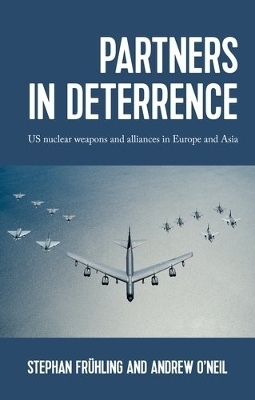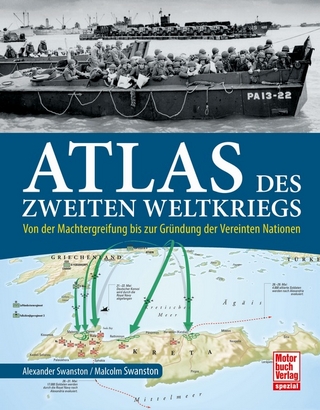
Partners in Deterrence
Us Nuclear Weapons and Alliances in Europe and Asia
Seiten
2023
Manchester University Press (Verlag)
978-1-5261-7185-6 (ISBN)
Manchester University Press (Verlag)
978-1-5261-7185-6 (ISBN)
The book explains how and why nuclear weapons cooperation between the US and its allies has evolved since the 1950s. By bringing institutional perspectives to the study of how alliances operate, it focuses on the objectives and sources of influence of US allies in Europe and Asia as they cooperate with the US on the world’s most powerful weapons. -- .
From the dawn of the atomic age to today, nuclear weapons have been central to the internal dynamics of US alliances in Europe and Asia. But nuclear weapons cooperation in US alliances has varied significantly between allies and over time. This book explores the history of America’s nuclear posture worldwide, delving into alliance structures and interaction during and since the end of the Cold War to uncover the underlying dynamics of nuclear weapons cooperation between the US and its allies.
Combining in-depth empirical analysis with an accessible theoretical lens, the book reveals that US allies have wielded significant influence in shaping nuclear weapons cooperation with the US in ways that reflect their own, often idiosyncratic, objectives. Alliances are ecosystems of exchange rather than mere tools of external balancing, the book argues, and institutional perspectives can offer an unprecedented insight into how structured cooperation can promote policy convergence. -- .
From the dawn of the atomic age to today, nuclear weapons have been central to the internal dynamics of US alliances in Europe and Asia. But nuclear weapons cooperation in US alliances has varied significantly between allies and over time. This book explores the history of America’s nuclear posture worldwide, delving into alliance structures and interaction during and since the end of the Cold War to uncover the underlying dynamics of nuclear weapons cooperation between the US and its allies.
Combining in-depth empirical analysis with an accessible theoretical lens, the book reveals that US allies have wielded significant influence in shaping nuclear weapons cooperation with the US in ways that reflect their own, often idiosyncratic, objectives. Alliances are ecosystems of exchange rather than mere tools of external balancing, the book argues, and institutional perspectives can offer an unprecedented insight into how structured cooperation can promote policy convergence. -- .
Stephan Frühling is Professor in the Strategic and Defence Studies Centre Andrew O’Neil is Executive Dean, Faculty of Law and Business at Australian Catholic University -- .
Introduction
1 Realism, institutionalism, and nuclear weapons cooperation
2 Nuclear sharing and mutual dependence: Germany and NATO nuclear weapons cooperation
3 Local accommodation: Norway and nuclear weapons cooperation in NATO
4 Security at arm’s length: US–Japan nuclear weapons cooperation
5 Assurance and abandonment: Nuclear weapons in the US–South Korea alliance
6 Informal bargaining: Nuclear weapons cooperation and the US–Australia alliance
7 Understanding the drivers of nuclear weapons cooperation
Index -- .
| Erscheinungsdatum | 16.05.2023 |
|---|---|
| Verlagsort | Manchester |
| Sprache | englisch |
| Maße | 156 x 234 mm |
| Gewicht | 363 g |
| Themenwelt | Natur / Technik ► Fahrzeuge / Flugzeuge / Schiffe ► Militärfahrzeuge / -flugzeuge / -schiffe |
| Geschichte ► Allgemeine Geschichte ► Zeitgeschichte | |
| Sozialwissenschaften ► Politik / Verwaltung ► Europäische / Internationale Politik | |
| ISBN-10 | 1-5261-7185-6 / 1526171856 |
| ISBN-13 | 978-1-5261-7185-6 / 9781526171856 |
| Zustand | Neuware |
| Haben Sie eine Frage zum Produkt? |
Mehr entdecken
aus dem Bereich
aus dem Bereich
von der Machtergreifung bis zur Gründung der Vereinten Nationen
Buch | Softcover (2023)
Motorbuch Verlag
24,90 €


